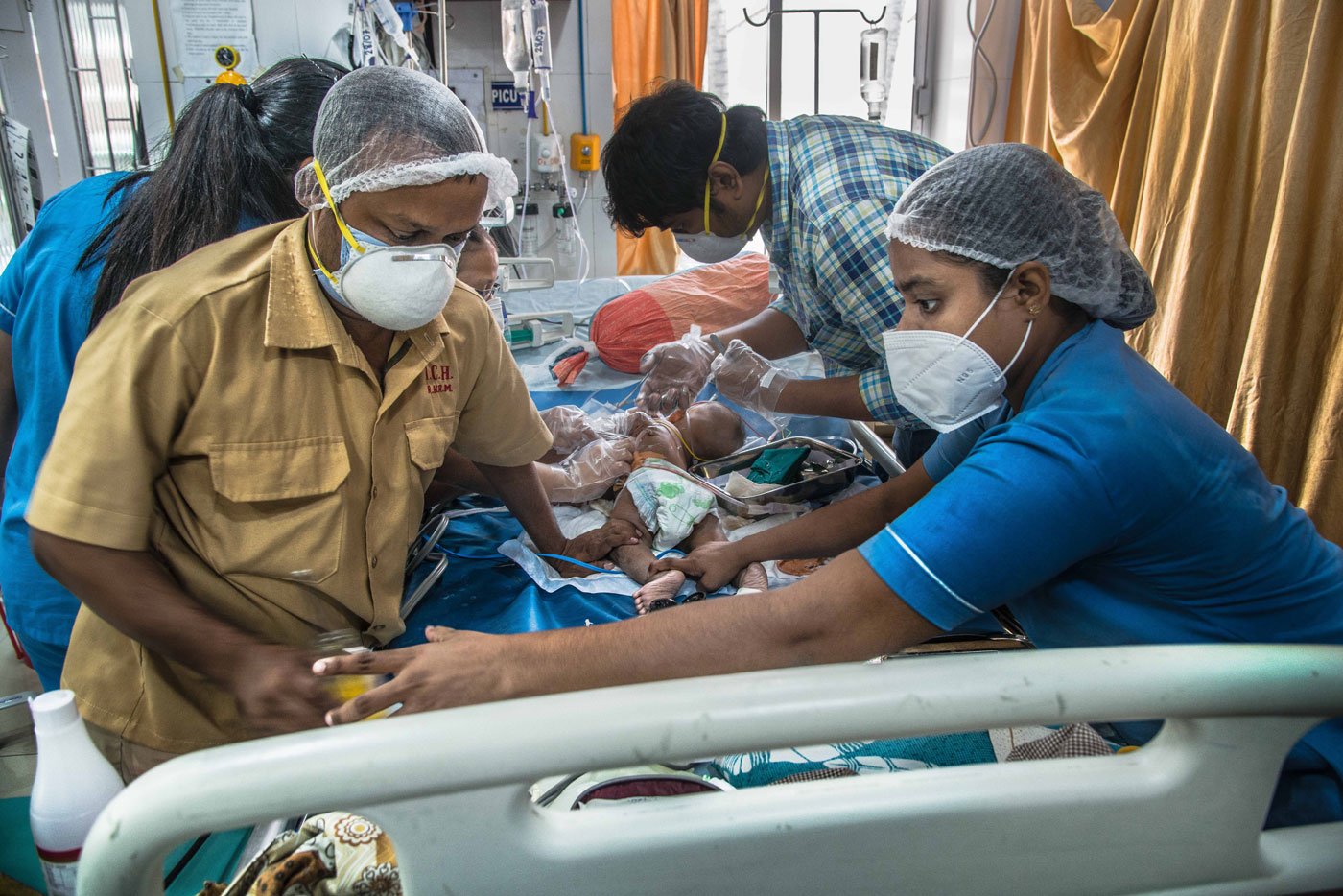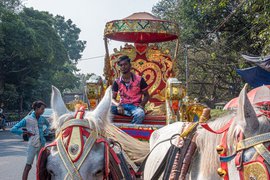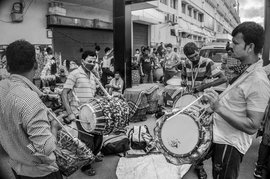They came in full PPE gear, looking like aliens landing in his village in the South 24 Parganas. “They came to catch me as if I was an animal,” says Haranchandra Das. His friends call him Haru – except he thinks they aren’t his friends anymore. Recently, they’ve been boycotting him. “And people stopped supplying my family groceries and milk. We were harassed in various ways and spent sleepless nights. All our neighbours are fearful of us.” All this even though Haranchandra had not tested positive for Covid-19.
His crime: he works in a hospital. And most health workers are facing similar hostility. Probably even those district-level workers who came hunting for him suspecting he was infected.
“Everybody feared that because I work for a hospital, I must be infected,” he says.
Haranchandra, who is in his mid-30s, works in the maintenance room of the Institute of Child Health (ICH), Calcutta, a non-profit hospital run by a Trust, which serves children from rural and suburban areas, besides Kolkata city. The families of the children who come to this 220-bed hospital in the Park Circus locality – India’s first paediatric institute, founded in 1956 – would find it tough to access or afford the medical treatment they get here, anywhere else.
Covid-19 and the lockdown have made it difficult for them to even reach the ICH. “Getting here is a problem,” says Ratan Biswas, who has just arrived from a village in the South 24 Parganas. “I used to work as a daily wager in a betel leaf farm. Amphan [the cyclone that hit on May 20] destroyed that farm and I lost my source of income. Now my younger child has developed this infection behind his ears, so we’ve brought him here. With no train services available, it was hard reaching this hospital.” People like Das end up using a mix of buses, rickshaws, and walking part of the distance to get to the hospital.
ICH doctors warn of more problems to come.
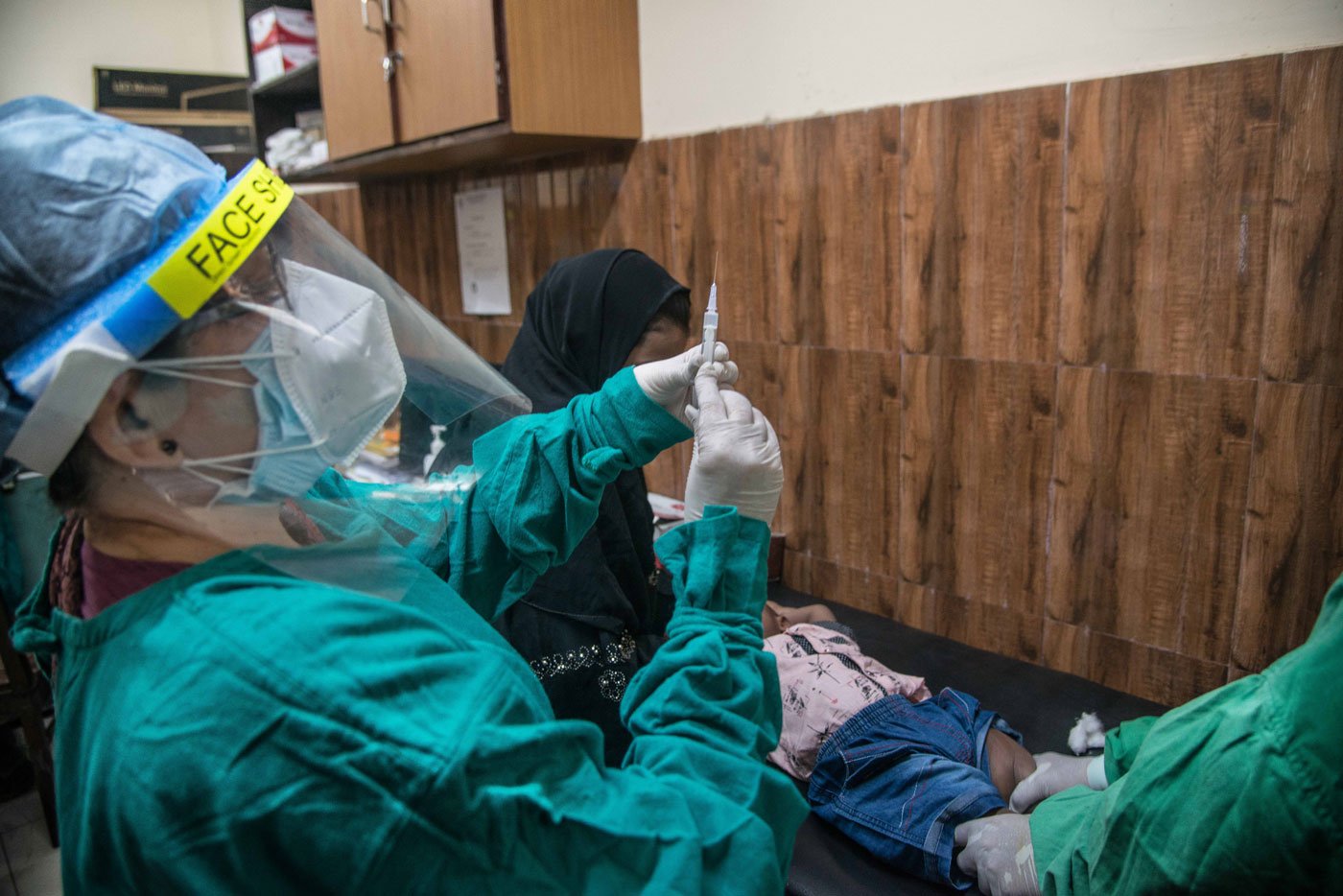
Dr. Rina Ghosh prepares to vaccinate a patient against Japanese Encephalitis. With vaccination campaigns falling sharply under lockdown, children missing out on routine immunisations are at risk.
There is no crisis in blood supply at this moment, but one is looming, says Dr. Tarak Nath Mukherjee of the haematology department. “ Blood donation camps have become infrequent during the lockdown. In normal times, 60 to 70 blood donation camps take place each month [in the South Bengal region]. But in the past four months – only around 60 camps. At some point this will affect thalassaemic patients, especially those from the rural belt."
“Covid-19 has emerged as a massive crisis in the child healthcare system,” says Dr. Rina Ghosh, an immunology expert in the hospital. “With the lockdown, numerous health and vaccination camps had to be called off in both rural and urban areas. I fear that in coming years, cases related to diseases like pneumonia, measles, chickenpox and whooping cough might surge. Though we have eliminated polio in India, it could affect that too.
“The vaccination process is hampered because the government has redeployed staff from other healthcare sectors – putting them on Covid duty. So the whole immunisation process takes a hit.”
Looking around the hospital at the children already in need, that observation is worrying. The highest number of patients are in the 12-14 age group, though several are also much younger.
“My child, who has leukaemia, has missed important chemotherapy dates,” says Nirmal Mondol (name changed). She is from a village in East Midnapore and says “there is no train service available and I cannot afford a car.” Her visits have also been affected by her fear that “if I come to the hospital for his treatment, we will also get the coronavirus.”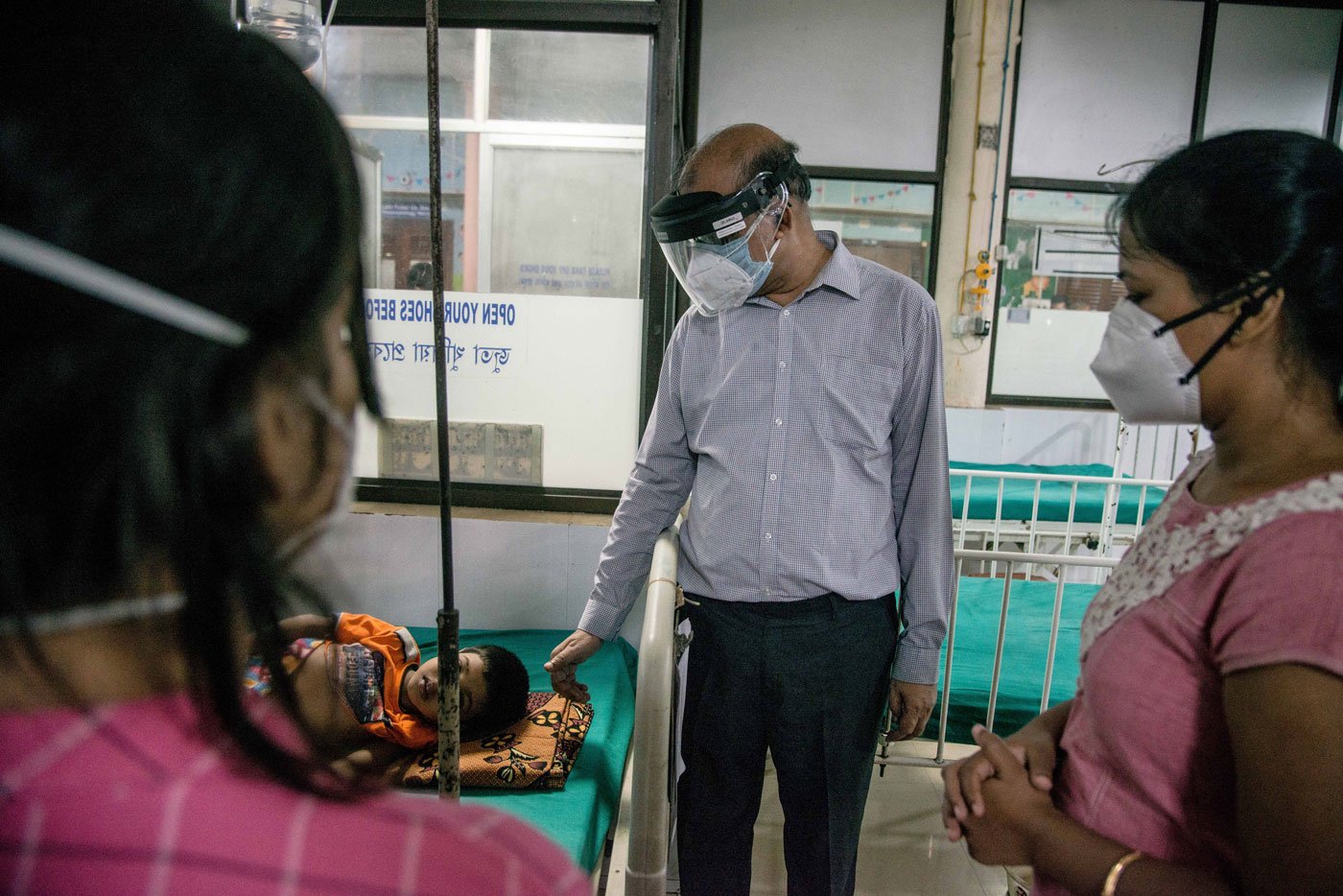
ICH deputy director Dr.
Arunaloke Bhattacharyya visiting a general ward for children. He says many patients from rural areas cannot reach hospitals for
lack of public transport.
“The effects of Covid on children are not that much visible, and kids seem to be mostly asymptomatic,” says the ICH’s children’s healthcare expert, Dr. Prabhas Prasun Giri. “But sometimes we do see a few of them test Covid positive – who have actually come here for some other treatment. We have a separate isolation unit for kids with respirometry problems.”
Meanwhile, the doctors too suffer from stigmatisation. Soma Biswas (name changed) standing next to Dr. Tarak Nath Mukherjee, says: “Since my husband is a doctor [at another hospital] and I work here on staff, we are now staying at my father’s place. We are unable to return to our own flat as we fear our neighbours will object.”
As early as March 18, the World Health Organisation had warned that “some healthcare workers may, unfortunately, experience avoidance by their family or community owing to stigma or fear. This can make an already challenging situation far more difficult."
The experiences of healthcare workers here validate that warning.
With some of them commuting in from nearby villages, the Institute of Child Health has to contend with troubles within the families of the healthcare workers; their tortuous transportation problems; the social stigma their work now draws – and the painful outcomes of these setbacks.
All this has led to the curious situation where hospital bed occupancy has dropped, the number of patients is actually fewer – but the pressures have shot up . At present, says one hospital administrator, “The OPD [Out-Patients Department], which normally served some 300 patients a day, now sees just around 60” – that’s an 80 per cent decline. In-patient bed occupancy has fallen from 220 to about 90, a drop of 60 per cent. But, adds the administrator, “We have to manage with just about 40 per cent of total staff.”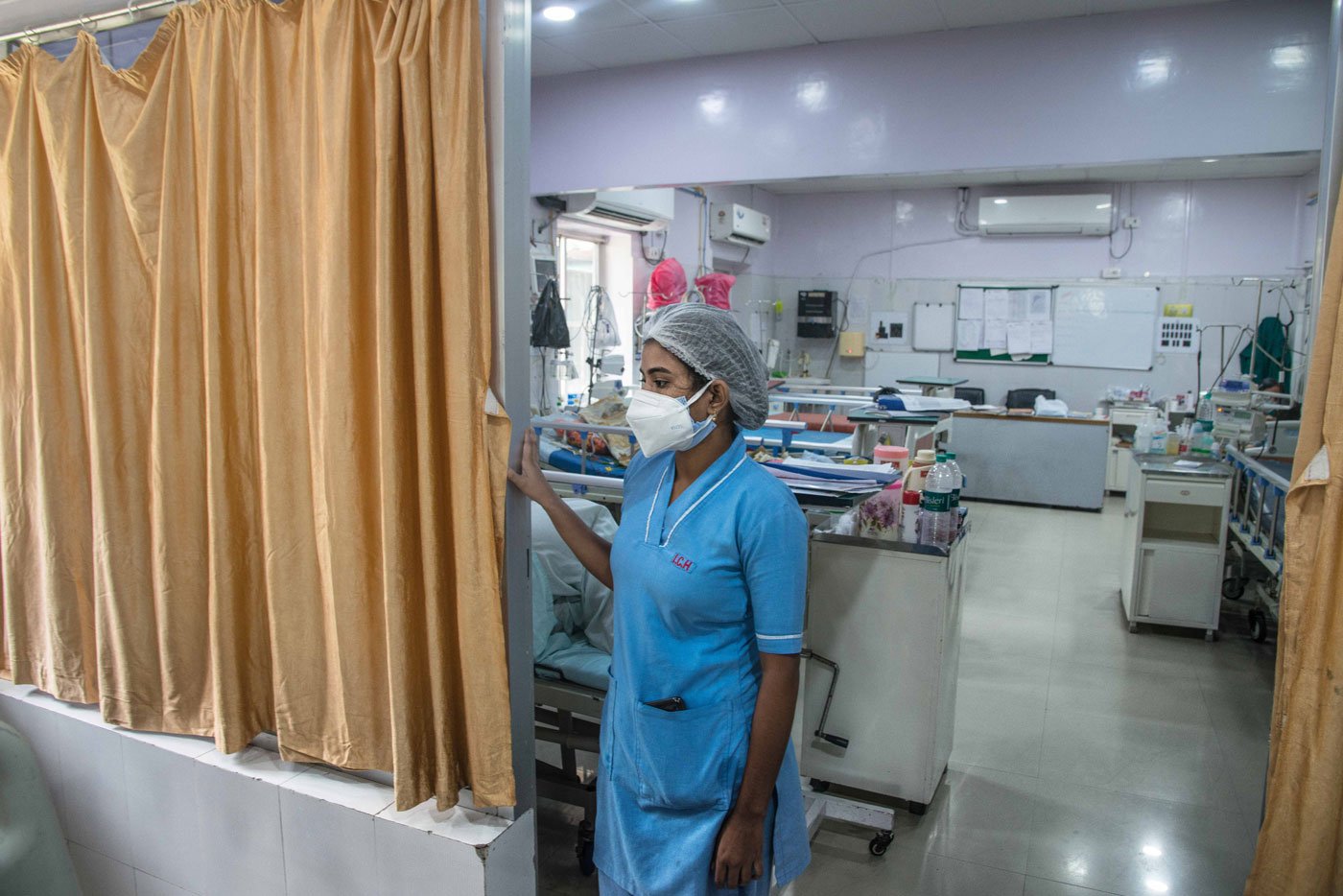
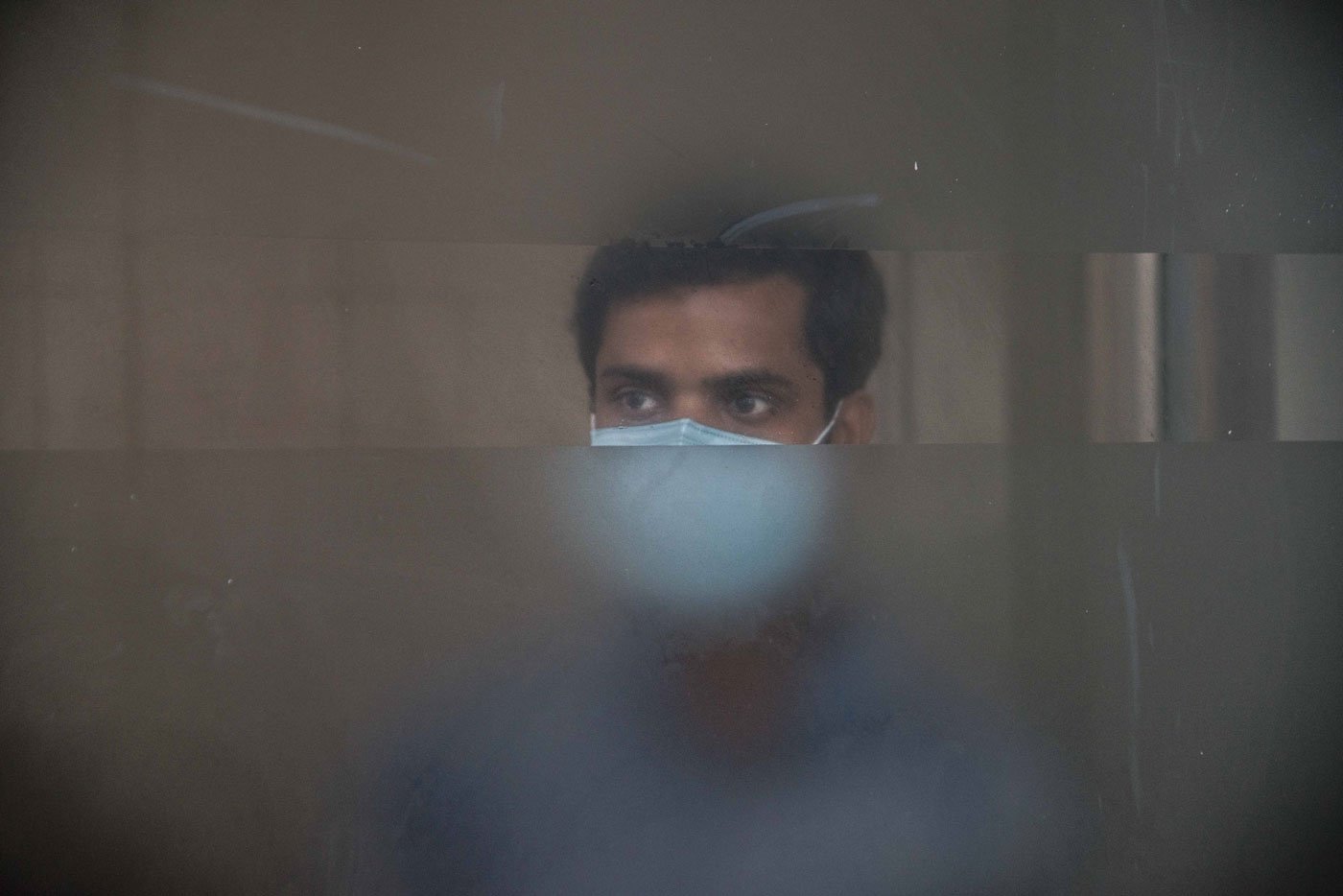
Left: A nurse in the Neonatal Intensive Care Unit (NICU). Despite seeing staff on duty falling to 40 per cent of normal, the hospital soldiers on in providing services for children-left. Right: Health worker hazards: Jayram Sen (name changed) of the ICH was not allowed, for several days, to take water from a community tap in his village in the South 24 Parganas.
At full strength that staff would be 450, including 200 nurses, 61 ward assistants, 56 sweepers and 133 staffers in other departments. And there are around 250 doctors associated with the ICH at various levels. Of these, 40-45 serve full-time in-house, and 15-20 consultants come in every day. The rest visit as surgeons, faculty (in a teaching hospital), at the voluntary OPD services and in other areas.
The lockdown has posed severe challenges for all of them. As deputy chief operating officer Aradhana Ghosh Chowdhury points out, “Arranging for the safety of the patients and staff, allocation of medical personnel for different tasks, all this is now a problem. Many from the staff are unable to reach here or to return to their homes with no trains available and, earlier, no bus services either.” Some of the healthcare staff have stayed back in the hospital premises, while some who were already in their home villages have not reported for duty “to avoid social stigma.”
The hospital now faces financial problems as well. The ICH is a non-profit institution where doctors do not charge for their services and other charges are very low. (Often the hospital waives charges altogether for the very poor). With the drop in both bed occupancy and OPD visitors, even those meagre sources have shrunk – but the expenditures imposed on the hospital by Covid have added at least 15 per cent to existing costs.
“That includes sanitation, PPE and other Covid-related costs,” says Aradhana Ghosh Chowdhury. They cannot pass on rising costs to their patients because “the group we serve here are mostly BPL [below poverty line] persons from rural and suburban areas. How can they afford it?” The lockdown wrecked whatever little income they had. “Sometimes our doctors pay the extra costs that rise in this situation from their own pockets. At the moment, donations keep us going, but their volume is not enough to sustain us very long.”
The failure to build healthcare infrastructure over the years, says ICH deputy director Dr. Arunaloke Bhattacharya, now returns to haunt us. Between the different forces in motion, he adds, “Frontline health workers and regular patients are the real sufferers.”
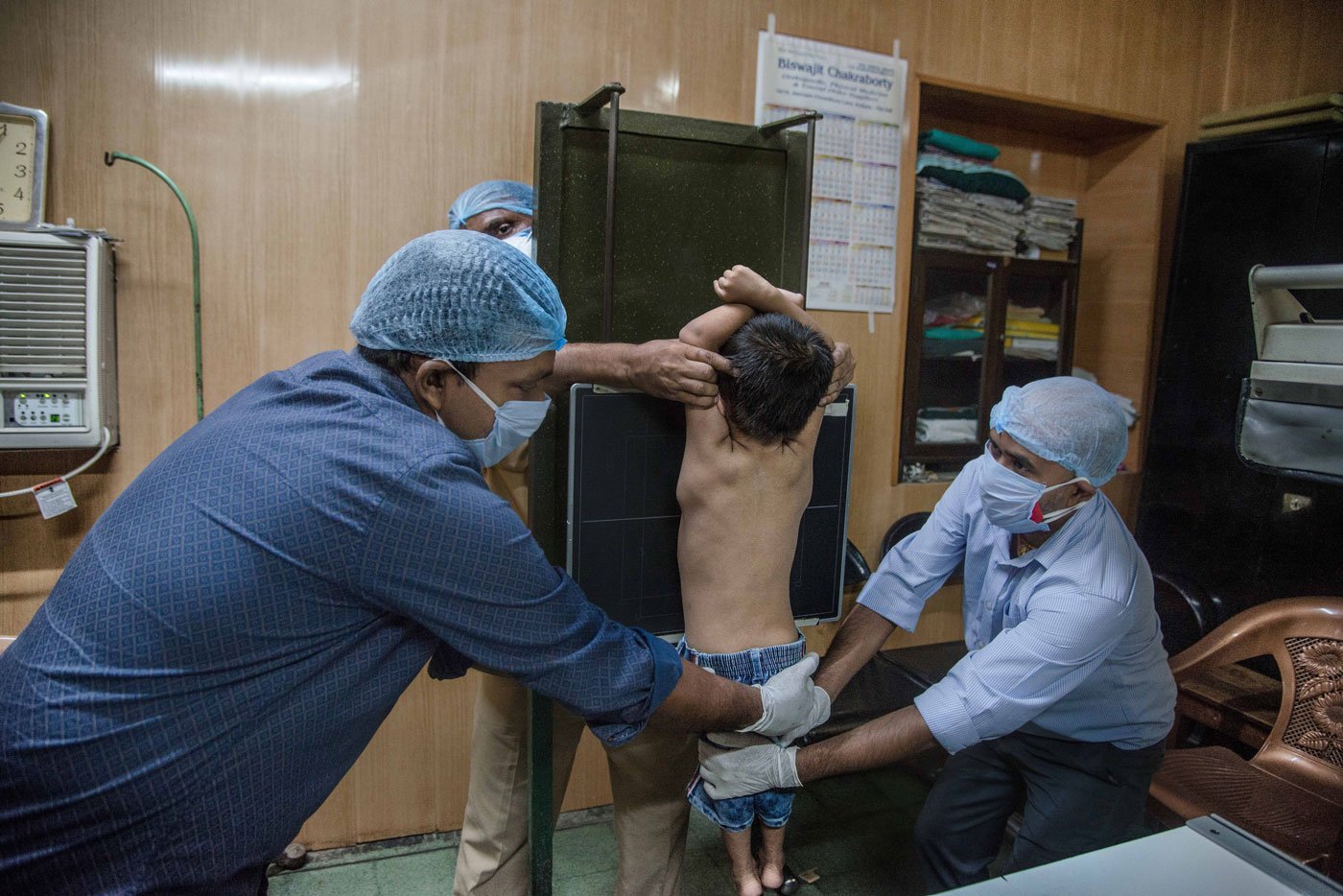
A child from Bankura district getting a chest X-ray. The pandemic could be driving a big dip in volumes of imaging across the country, depending on the location of the healthcare facility.
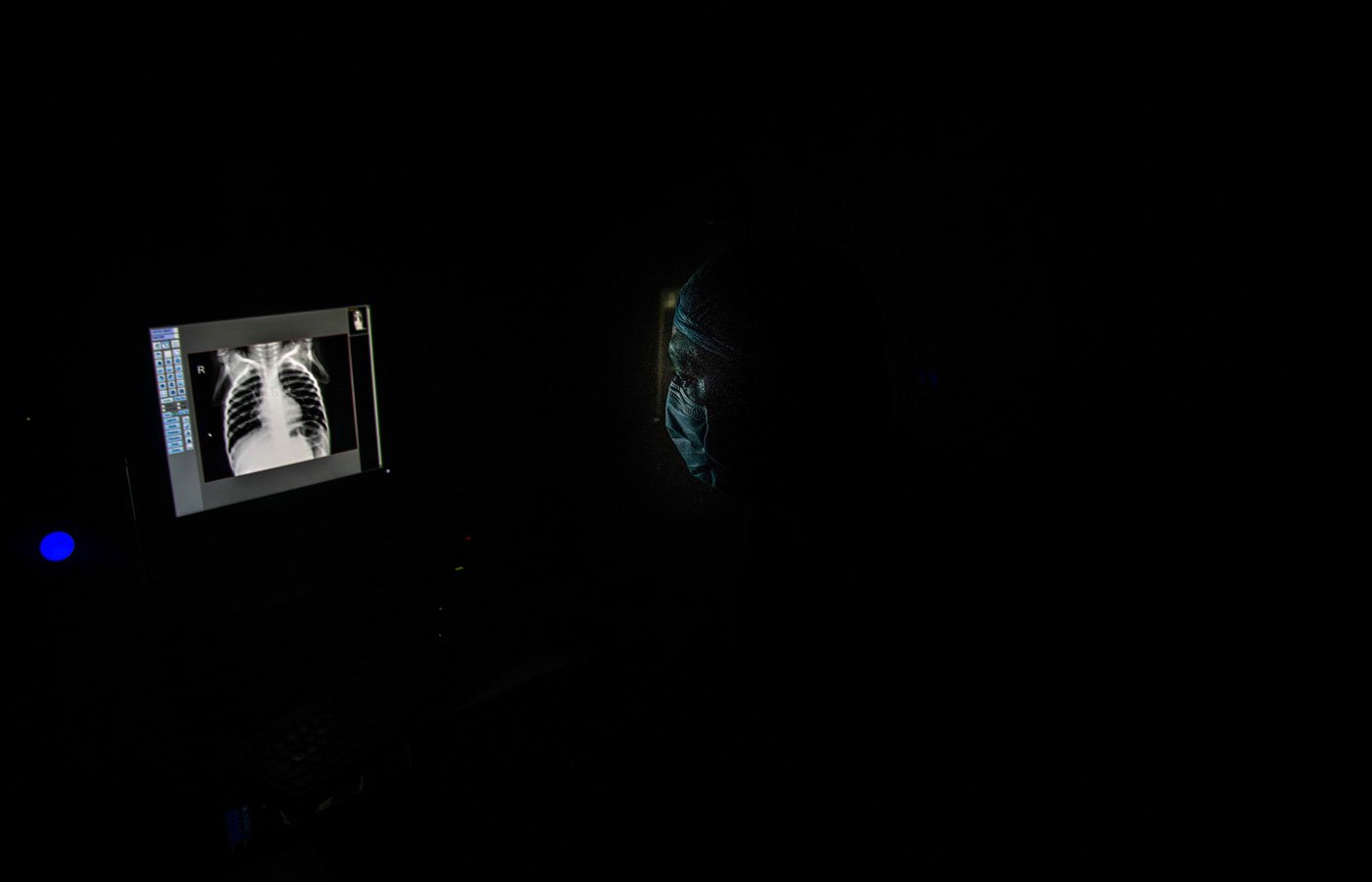
Niladri Ghosh (name changed) of the radiology department was harassed and heckled by neighbours in his village in Nadia district, and needed police help to emerge from his own home.
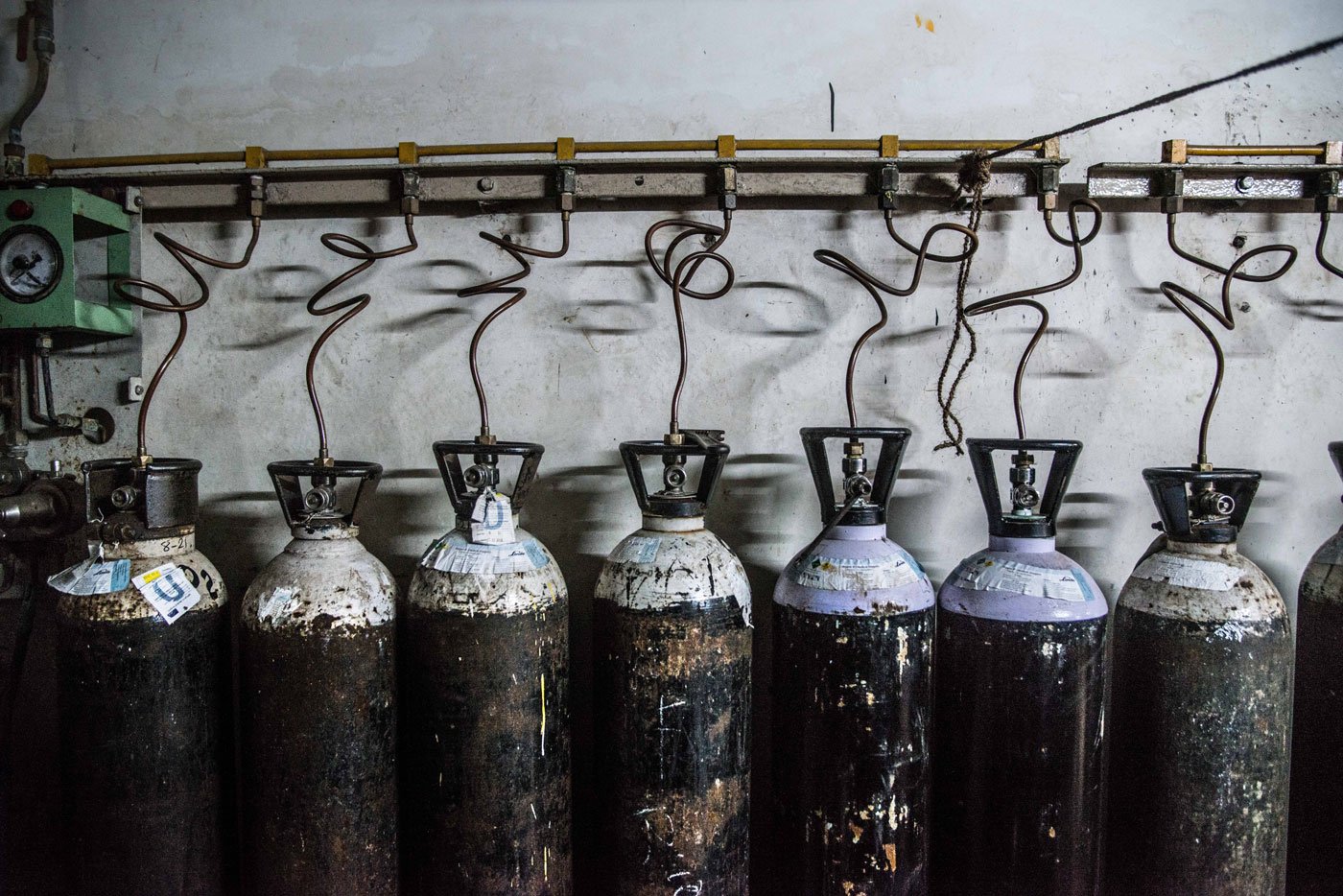
Life-supporting medical gases that have an important impact on the patient’s condition stored safely in the hospital.
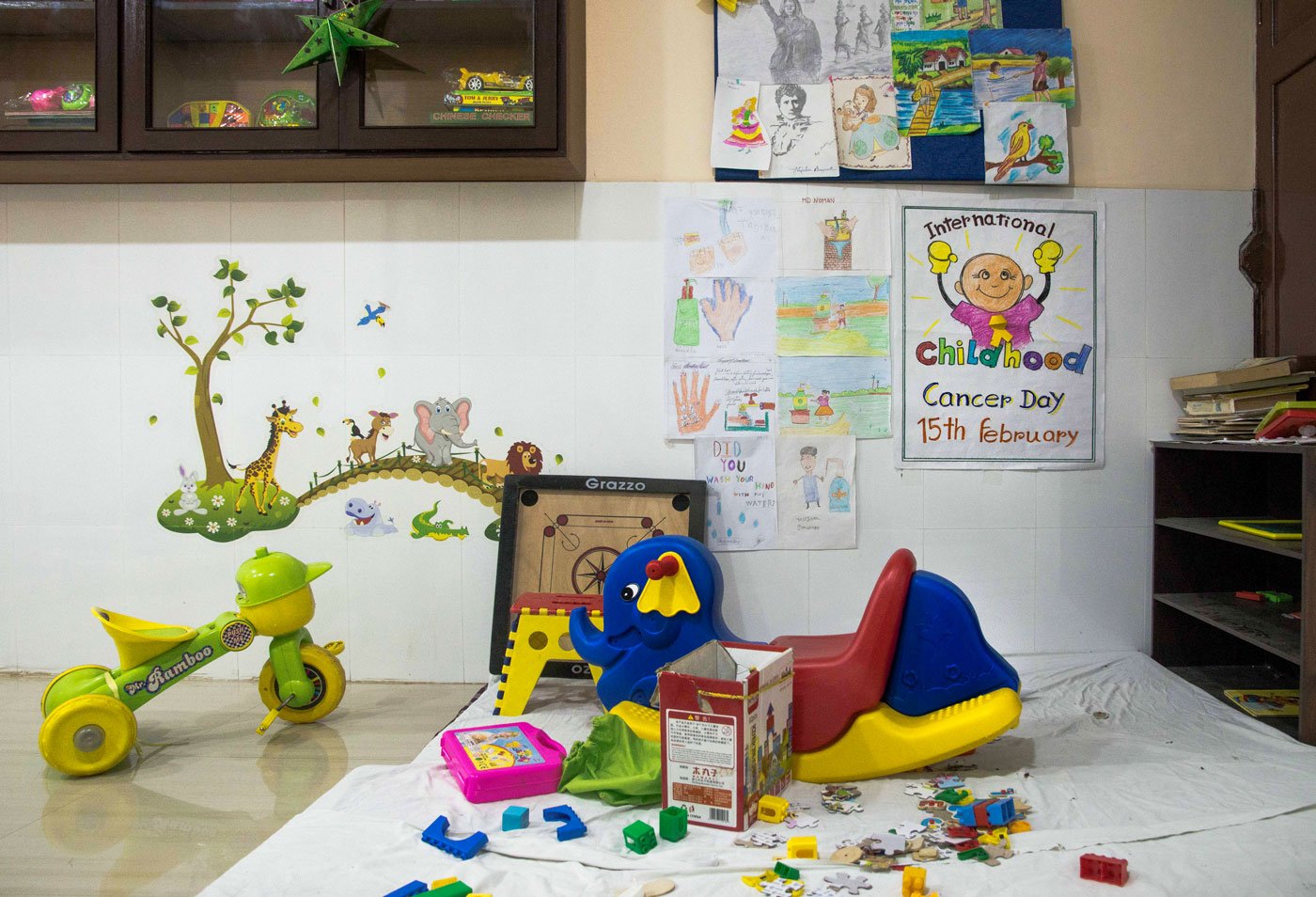
Children with cancer are facing tremendous challenges. Many, especially those from rural areas, have been missing their dates for chemotherapy during the lockdown period.
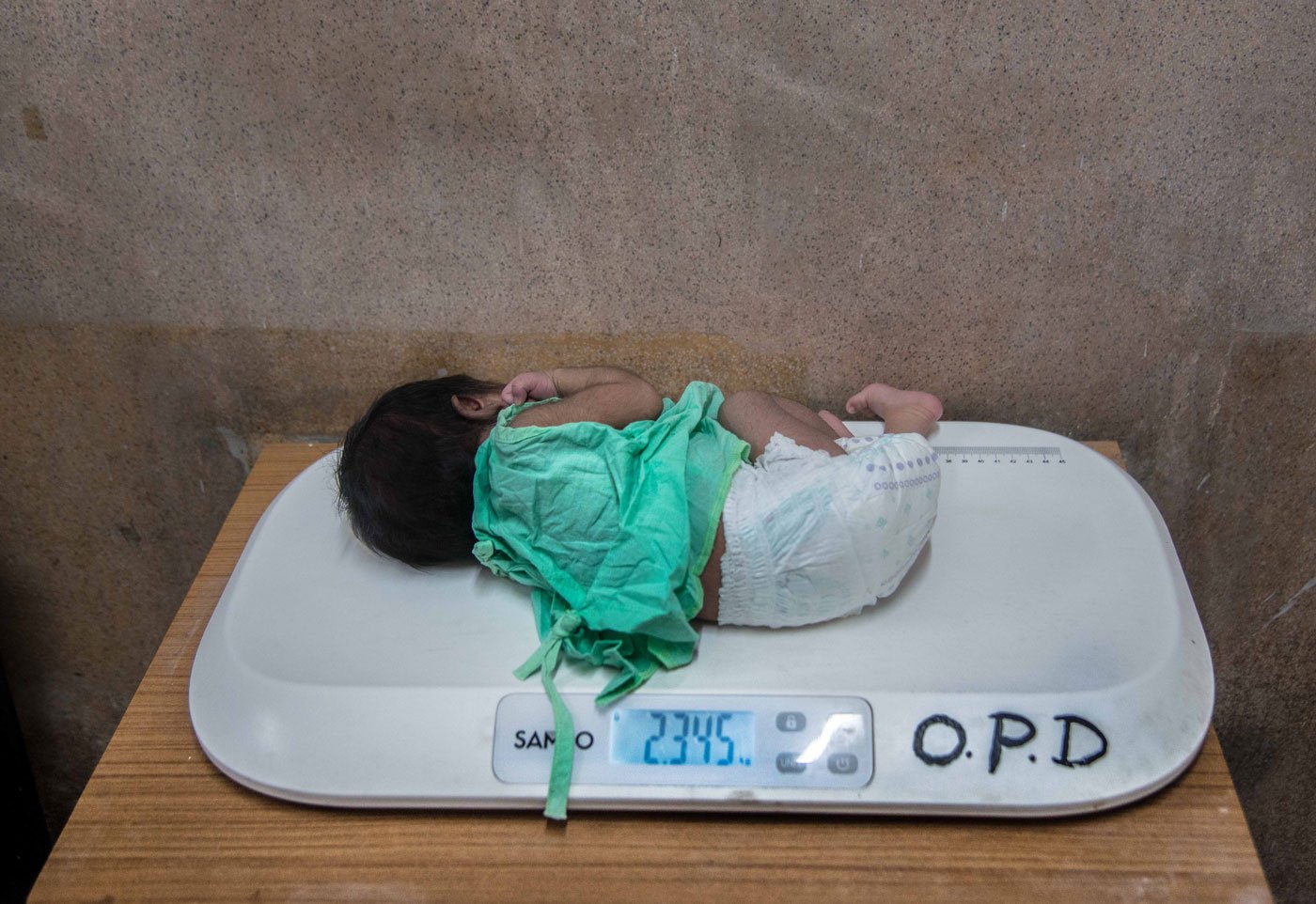
Newborns are often weighed throughout their stay in the hospital and occasionally, again, 48-72 hours after discharge. A weight check is also done for their parents.
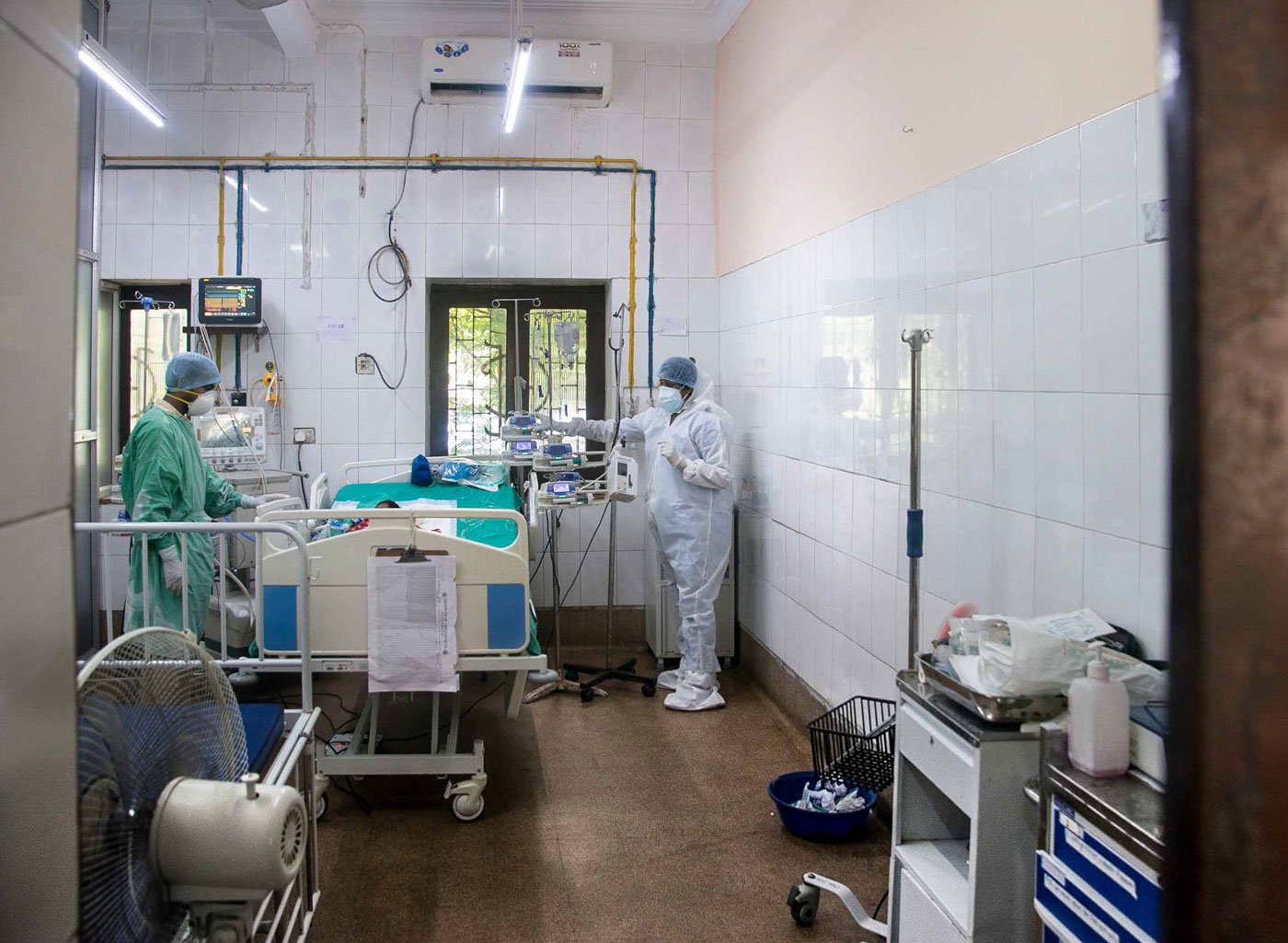
Inside an isolation room, staff in PPE kits attend to a Covid-positive child who is 35 days old.
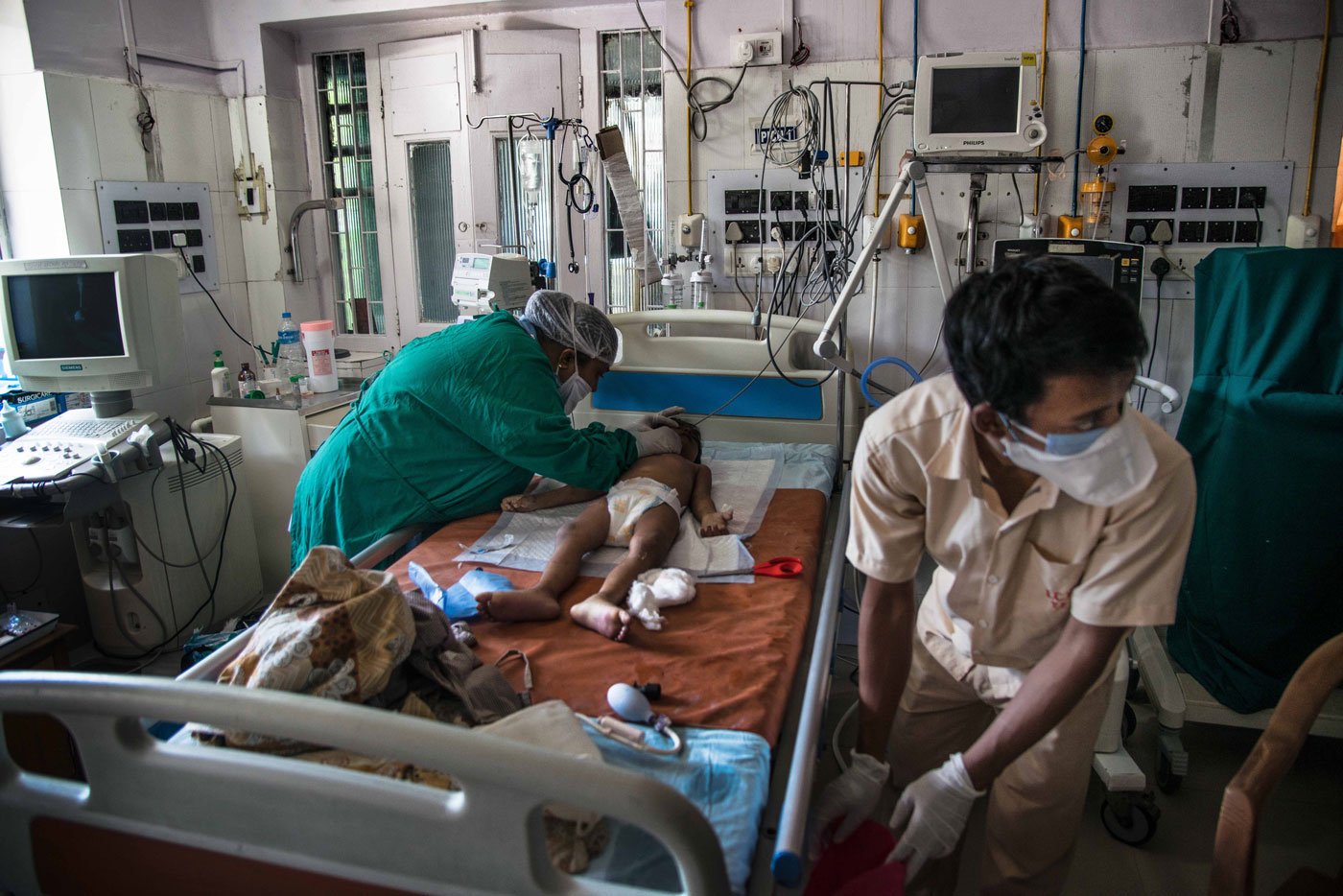
Inside the paediatric ICU, a delicate patient receives attention. The Federation of Resident Doctors Associations, Kolkata, has written to the Indian health ministry seeking protection and safety. Several doctors and nurses have reported harassment from neighbours.
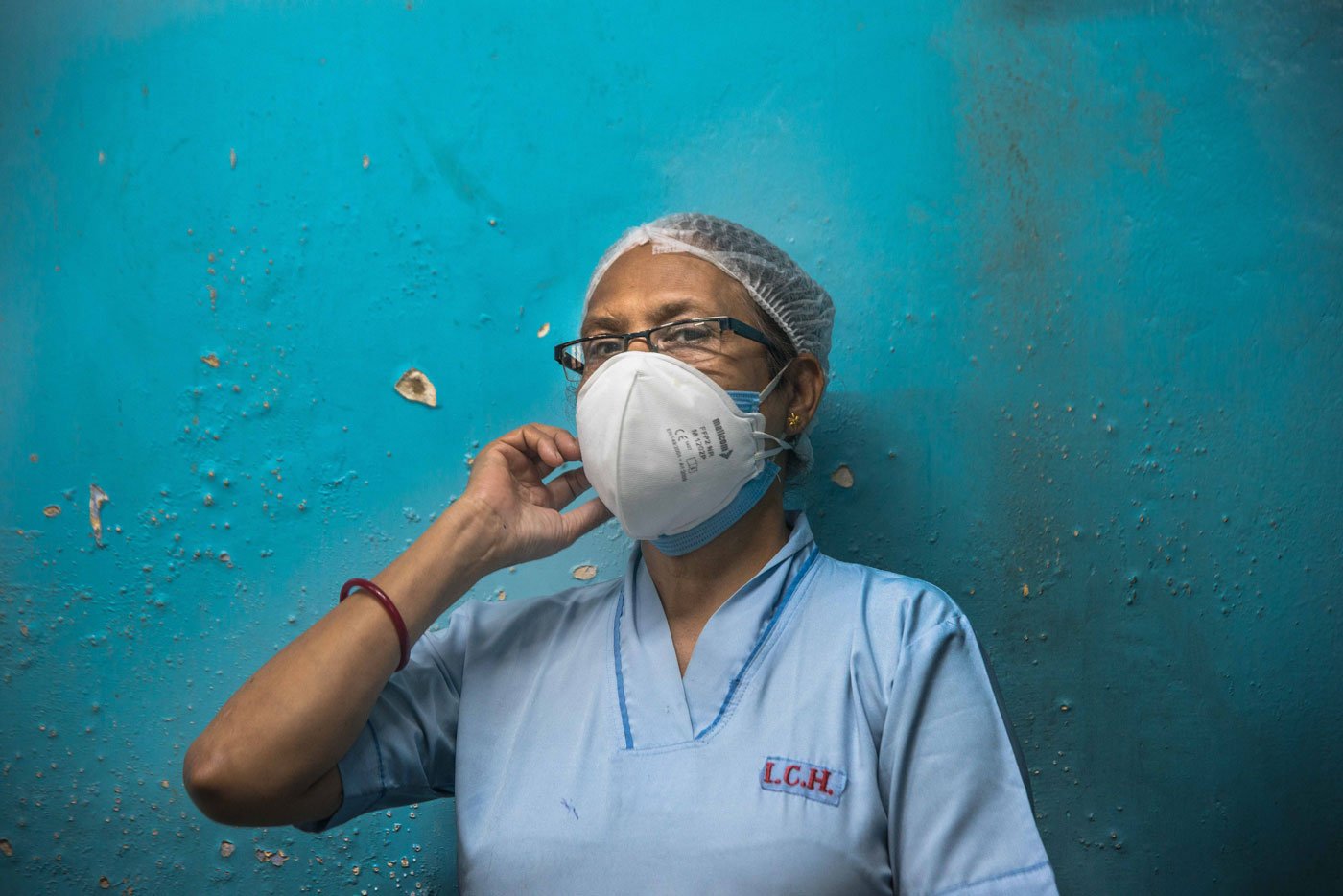
Covid-survivor Sister Sangeeta Pal says, 'I have defeated the virus and resumed duty after following proper quarantine protocol. My colleagues welcomed me back wholeheartedly'.
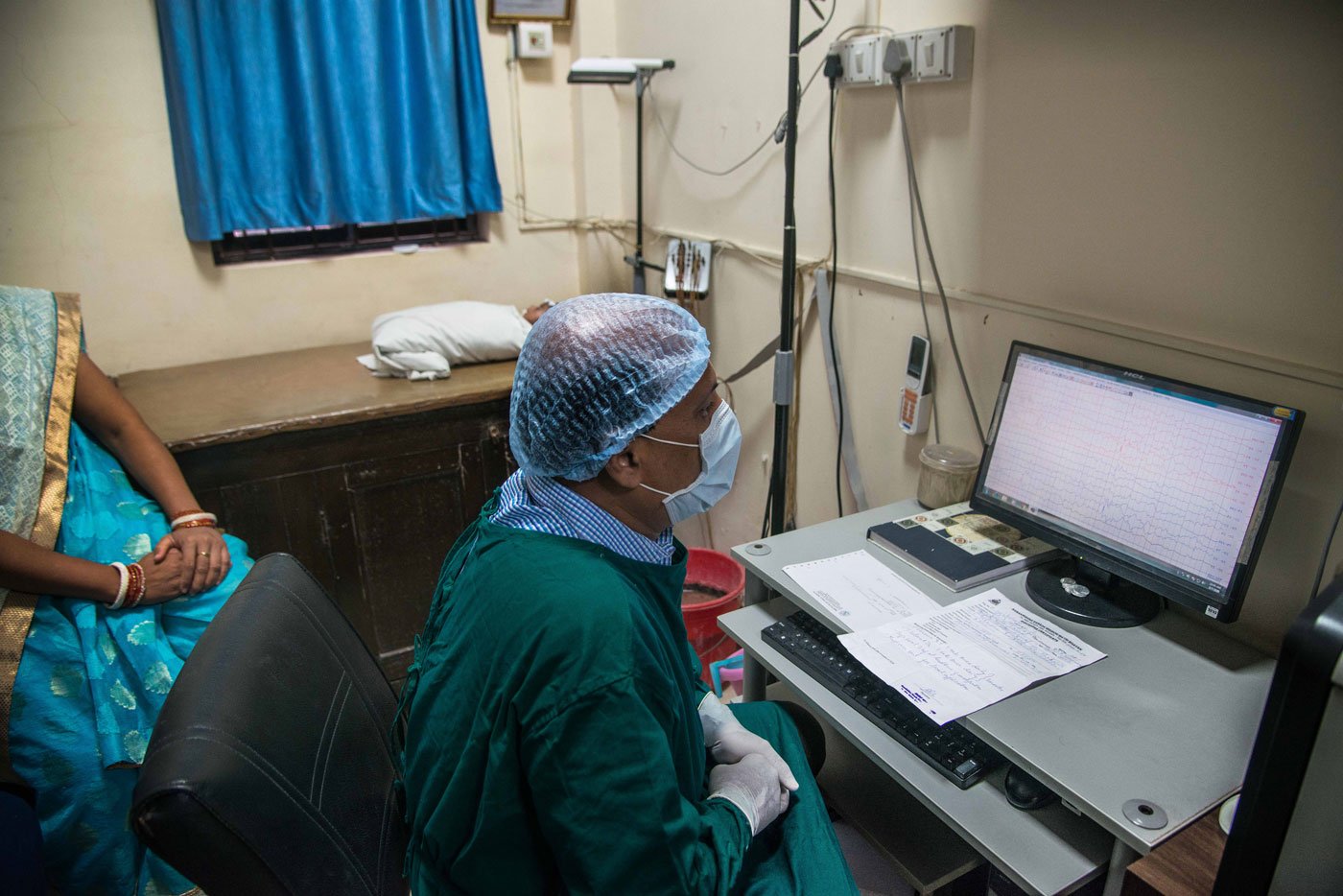
Medical technician Chanchal Saha running an EEG test on a month-old baby from a village in the South 24 Parganas. Lab technicians, who now have to execute the process taking extra precautions, note a significant drop in the number of patients coming in.
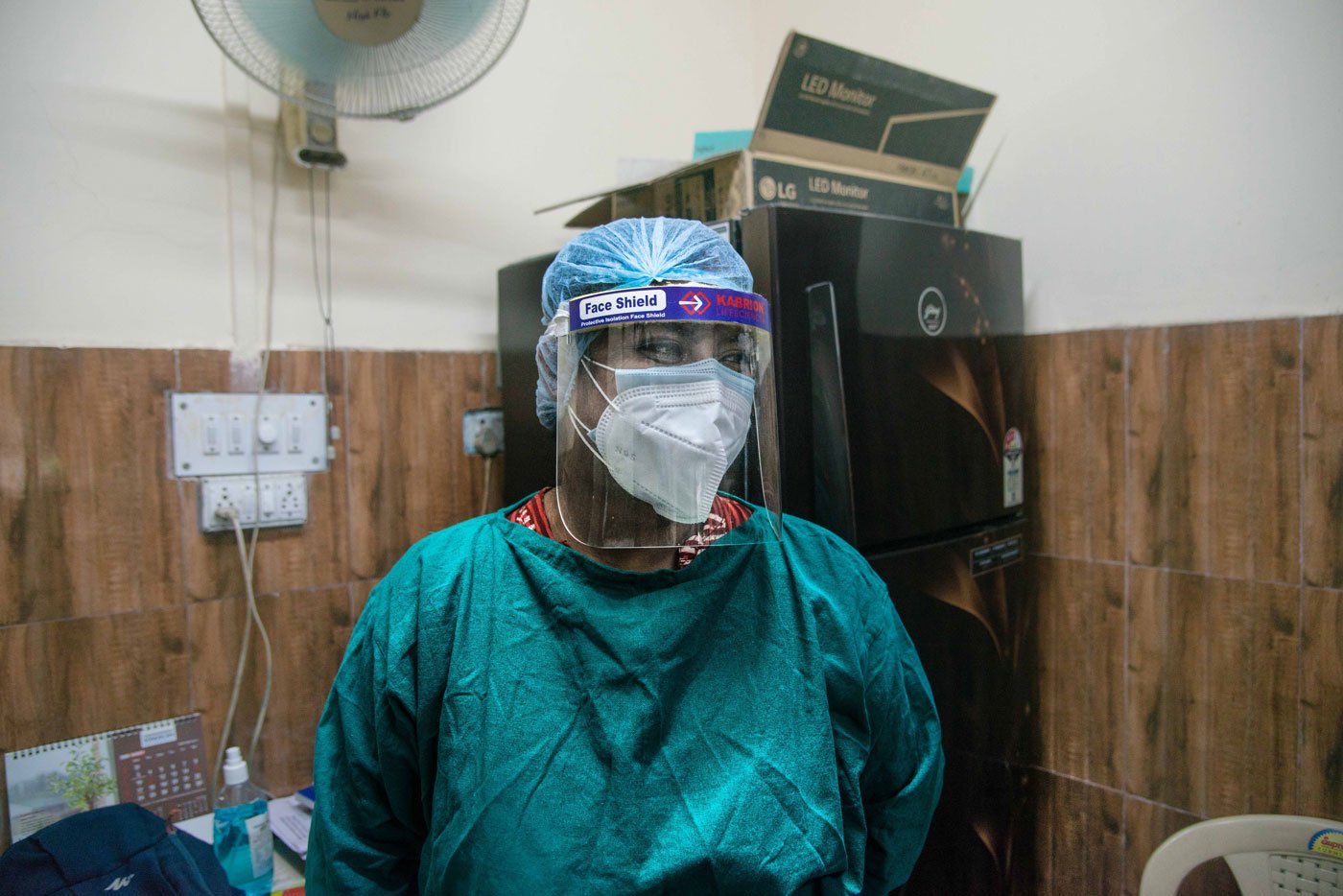
Moumita Saha, an assistant in the vaccination department, laughs in response to a joke made by her colleague.
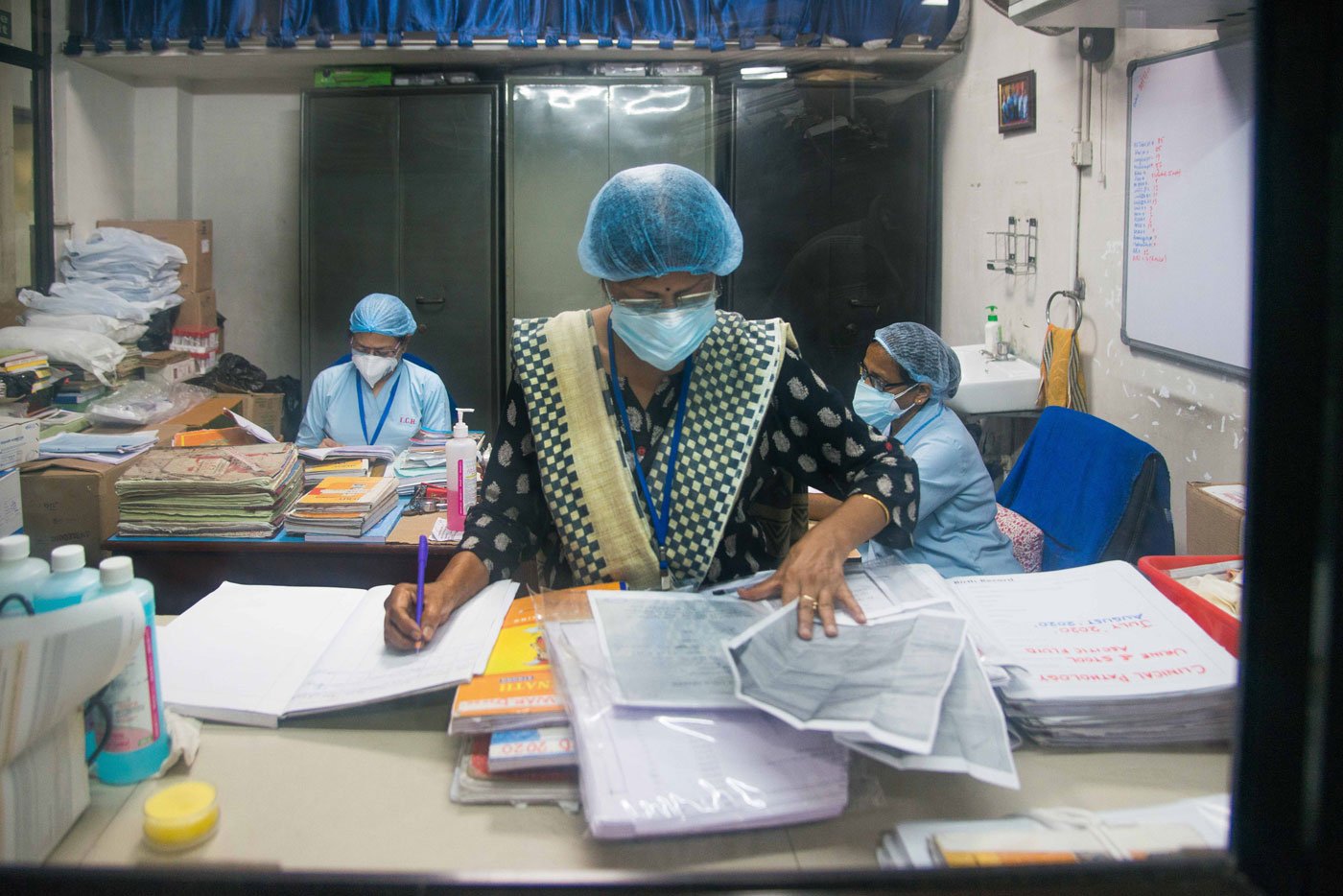
The heavily overworked hospital matron and sisters-in-charge have a crucial role in maintaining the whole system, supervising the well-being of the patients, and monitoring the duties of all the different health workers like nurses, ward assistants and sweepers. Here, matron Jharna Roy works on a job sheet inside her office.
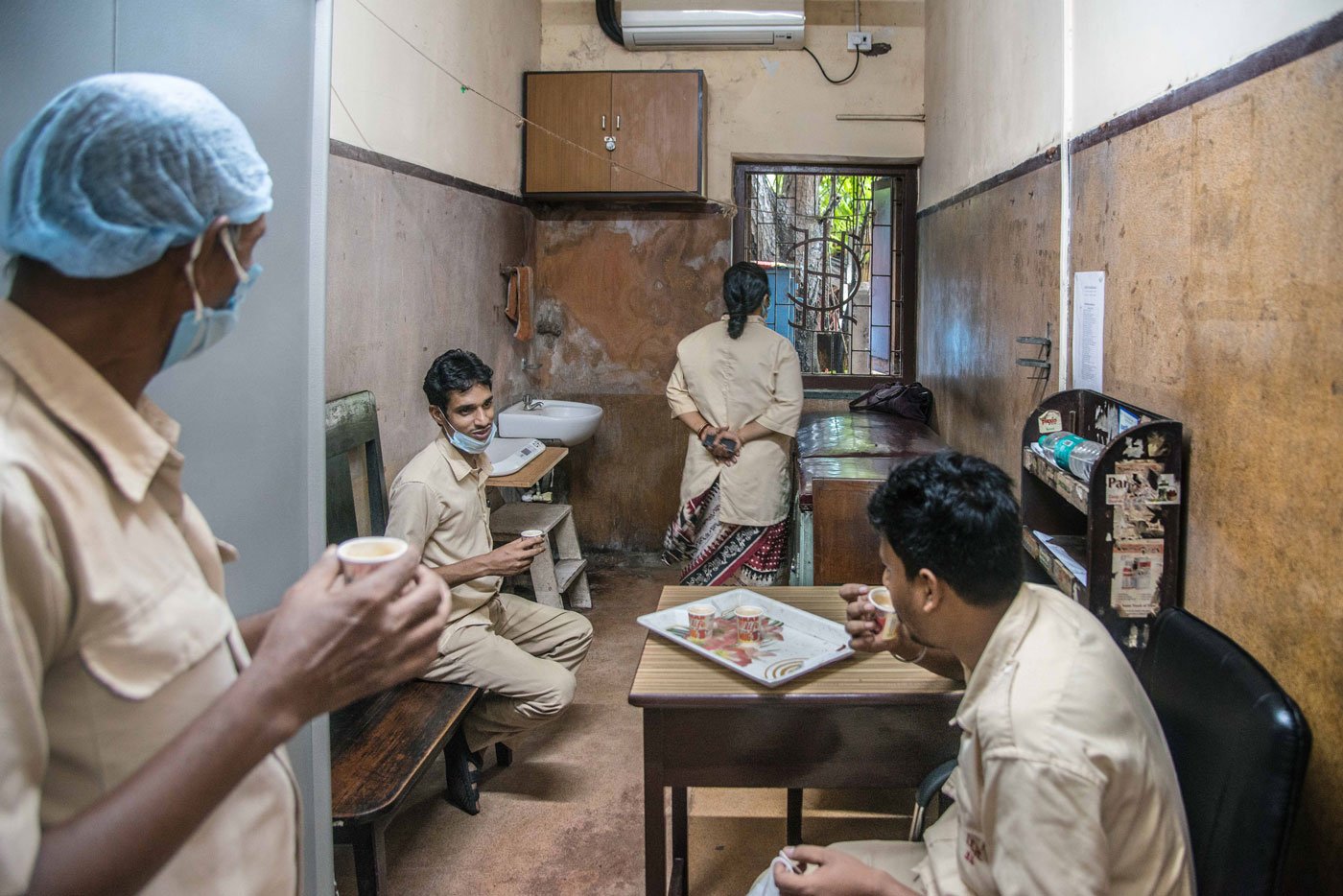
Ward assistants taking a tea break. Many of them are staying in the hospital premises since the lockdown began. Either because there are no regular train services serving their villages, or to escape harassment from their neighbours.
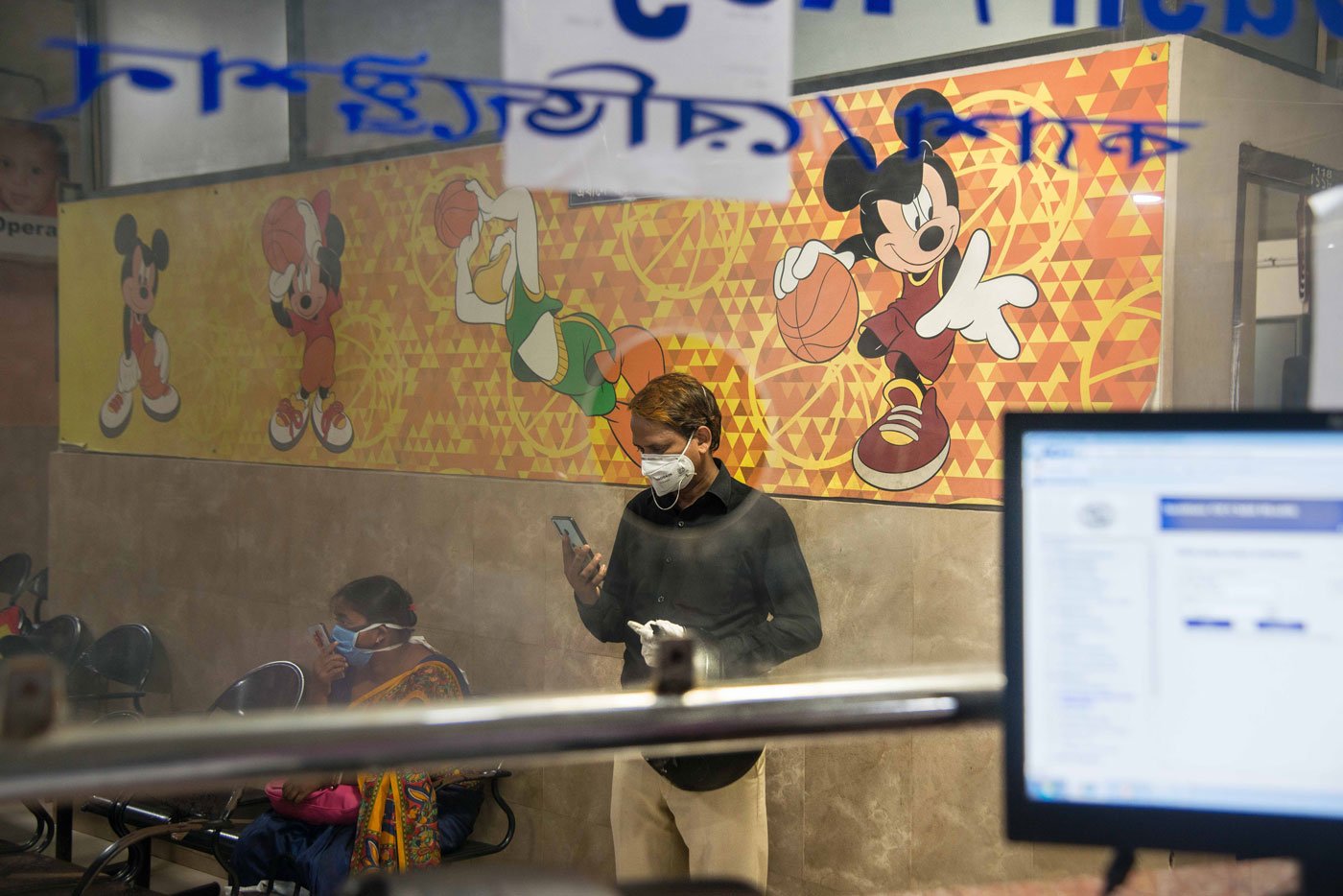
Near the reception counter, a visitor makes a video call to his home to confirm the admission of a family member.
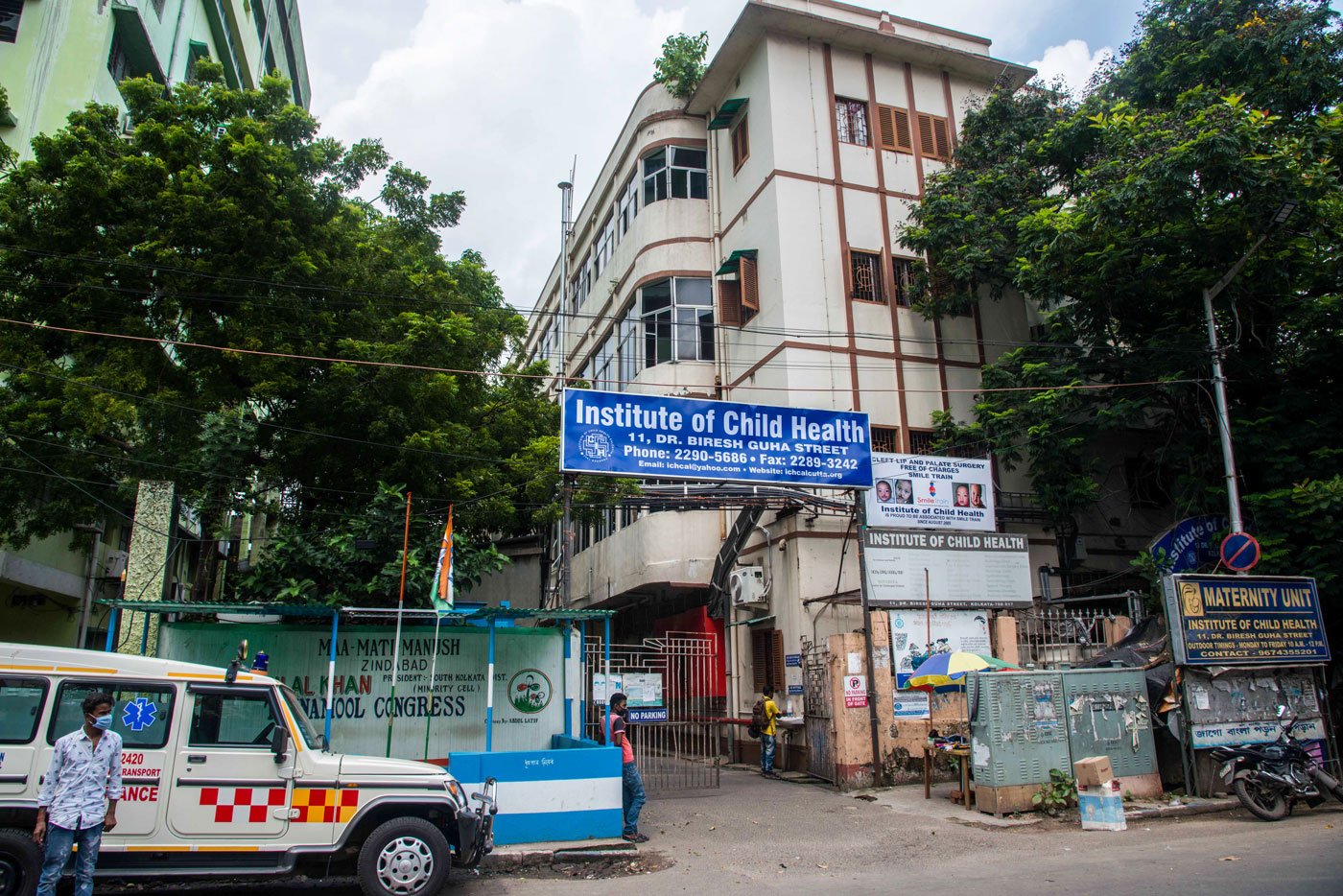
The Institute of Child Health (ICH) was founded by Dr K.C. Chaudhuri, doyen of Indian pediatrics, in Kolkata in 1956. ICH is a non-profit, trust-run hospital.
